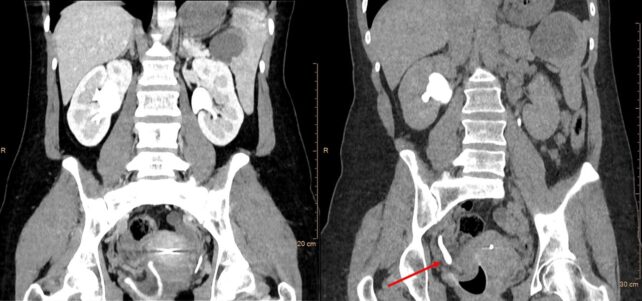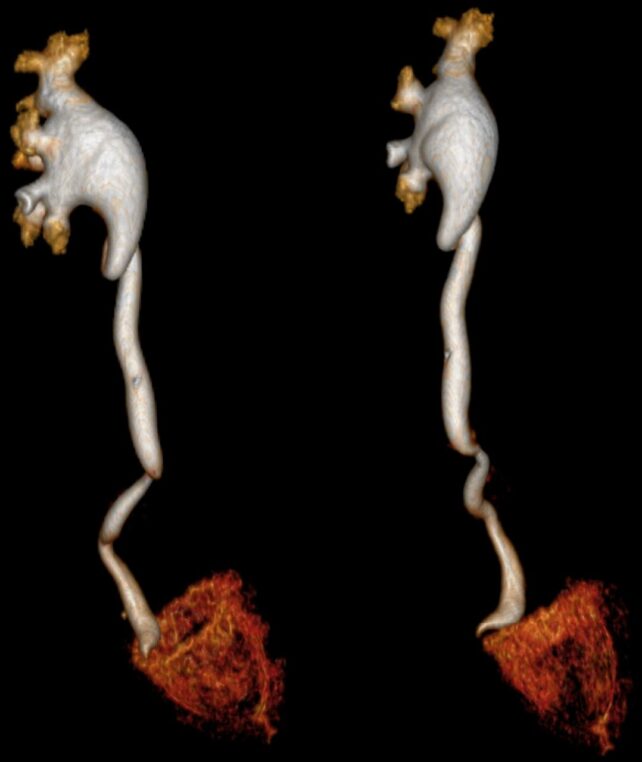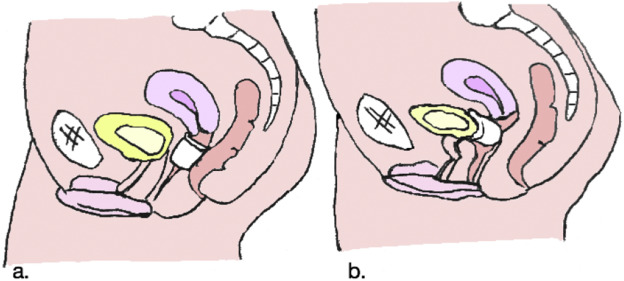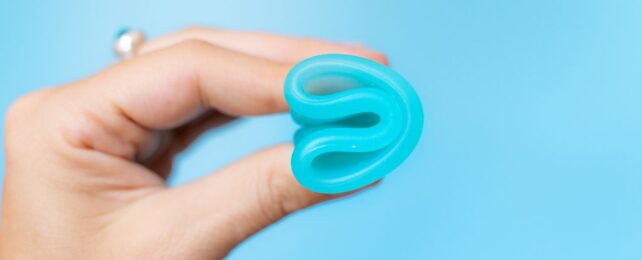As many turn away from tampons and pads – due to toxic chemicals, waste, or price – menstrual cups are emerging as a greener, cheaper, and easier option.
These flexible silicone cups are as safe and effective as other products for collecting menstrual fluid, according to numerous studies, but choosing the correct shape and size is important for more reasons than avoiding leakage.
A new case study details a rare but serious consequence of using a menstrual cup that is too big or poorly positioned. It's something that both users and doctors should be aware of, say urologists Clara Maarup Prip and Lotte Kaasgaard Jakobsen from Aarhus University in Denmark.
Their case report involves a young patient in her early 30s, who started noticing blood in her urine and pain in her abdomen and side. Six months after symptoms began, a scan revealed swelling in her right kidney and ureter, which is the tube that carries urine to the bladder.
Right at that critical juncture, imaging showed the edges of a menstrual cup butting up against the ureter's opening and compressing it.

Because the ureter passes close to the vaginal wall on its way to the bladder, the woman was told to avoid using a menstrual cup during her next cycle.
Menstrual cups are designed to suction to the edges of the vaginal wall, but if they push too hard, they could feasibly compress the ureter.
When the young female patient returned for another scan after a month of not using a menstrual cup, her kidney swelling had gone down and her symptoms had disappeared.
"The complete relief of symptoms and regression of [swelling] supported the working diagnosis that the menstrual cup had mechanically obstructed the right ureter," conclude Maarup Prip and Jakobsen.
At a check-up six months later, the patient reported only using the menstrual cup a few times while swimming, for fear of blocking her ureter again.
But even if a patient experiences a similar outcome, it doesn't mean they can never use a menstrual cup again.
The authors of the current case study explain their patient's symptoms were due to "incorrect positioning" of her menstrual cup. In cases of a pelvis that tilts back, for instance, some menstrual cup providers advise positioning it lower in the vaginal canal.

Only a few other case studies of a menstrual cup impinging on the ureter exist in the scientific literature, and most incidences were easily remedied.
All of the patients involved reported pain in their back or abdomen, and they showed swelling of the kidney on a CT scan. After they stopped using a menstrual cup, their symptoms went away.
In three recorded case studies, the patients reported using a menstrual cup without any symptoms once they had figured out how to position it. One patient swapped their old one out with a smaller-sized cup.

As menstrual cups grow in popularity, the authors of the current study say it is important that patients are aware of how to properly use these products, and of what may indicate serious complications.
"Although it is quite rare, women should be made aware of symptoms that need medical attention, including flank pain, abdominal pain, and/or [blood in the urine]," write Maarup Prip and Jakobsen.
"It is important to choose the correct cup size and shape and insert it correctly to avoid complications."
The study was published in BMJ Case Reports.
